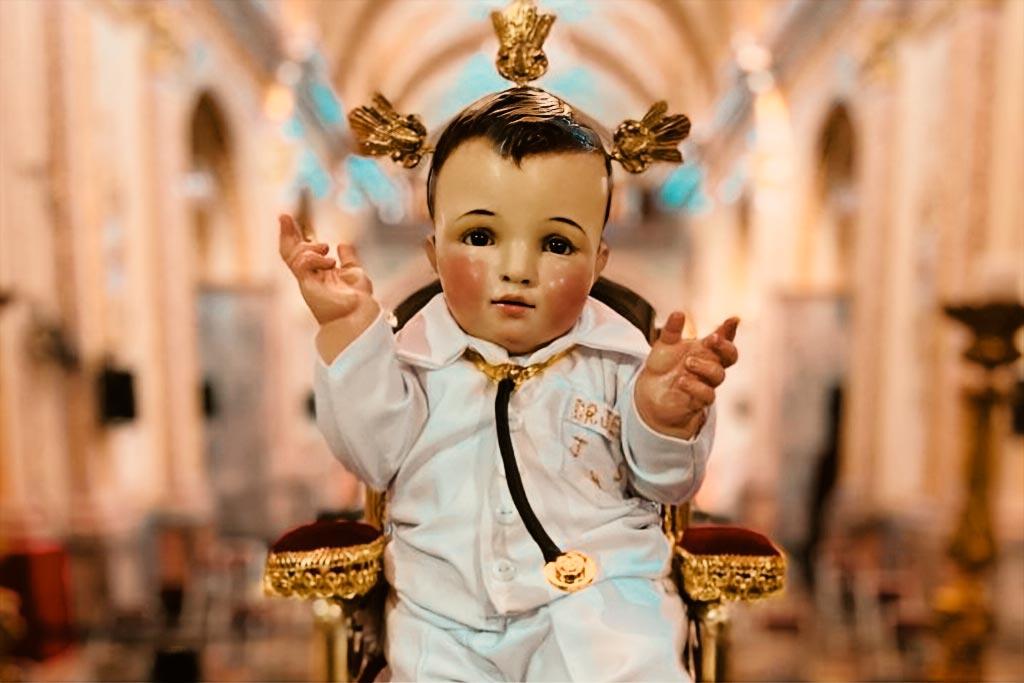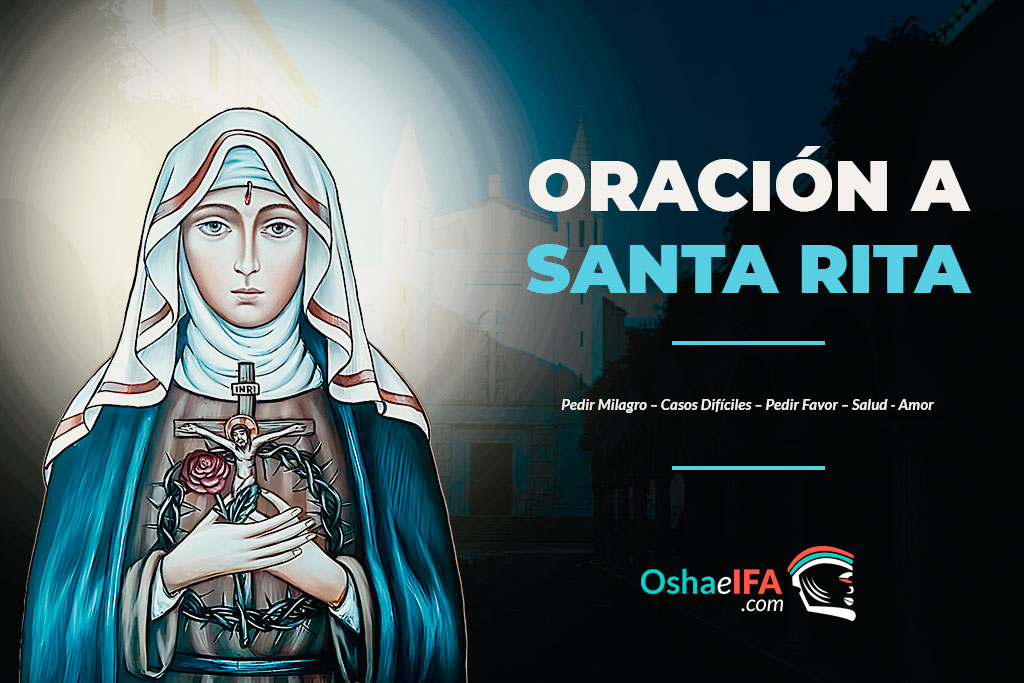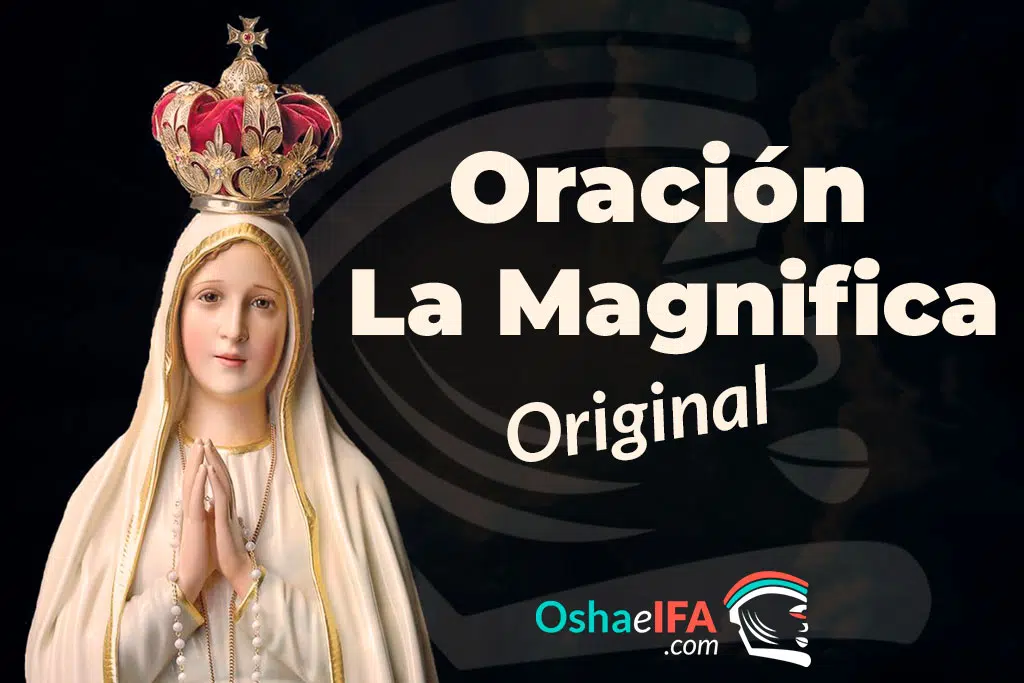The Cross of Caravaca: Meaning, Origin, Prayer and more

A symbol par excellence of the Christian religion is the cross. Banner that represents the death and resurrection of Jesus, whose sacrifice served to redeem the sins of humanity, and under which the dogma of his believers is based. Therefore, the Double Cross of Caravaca is an expression of faith, of love, of God's total dedication to us.
What is the Cross of Caravaca?
It is a different cross from the classic, patriarchal style, which has 4 arms; each pair of them has different measurements, which is why it is identified as a double cross. Its vertical base is supported by the archangels San Miguel and San Gabriel. In the center is Jesus crucified, as a symbol of the incalculable love of God.
Its meaning is very deep due to the fact that it is a double cross. This is related to the importance of the two planes in which man can exist. On the one hand, horizontally, the material plane is represented, where the soul materializes thanks to its ability to inhabit the body and through the use of the senses.
On the other hand, there is the spiritual plane in a vertical sense. In reference to the Divine essence to which we belong for having been created by God. This mixture represents the nature of the human being, whose destiny is to learn, evolve and achieve spirituality.
In addition to this, the presence of the archangels Saint Michael and Saint Gabriel as support of this important icon, such as the cross, demonstrates the service and protection they render to the Lord, and that commissions them for the care of all souls who seek the grace of God.
This Caravaqueña cross was used by the patriarchs to distinguish their hierarchy and position within the dioceses or bishoprics that, in view of their importance, were worthy of such a distinction. In addition, it was a reference to the jurisdiction that the bearer had over various ecclesiastical attributions.
This use of a patriarchal character, in a certain way, contributed to the popularization of the original cross, preserving considerable historical support, due to its origin and important preservation.
What is?
His cult is older than 800 years, so his cultural, historical and symbolic spiritual legacy is enormous and of great relevance to Catholic believers. The cross of Caravaca is a relic of a sacred nature, considered a talisman to protect and bless its bearers.
The cross is believed to possess miraculous powers capable of curing diseases and protecting believers. Her cult stems from the region of Murcia, in Spain, where her Basilica is located, which constitutes her most important pilgrimage center, to the world. It is a symbol of faith and is used in prayers, Catholic religious rites and many other places.
It may interest you: Prayer to the Holy Trinity
Origin and meaning
The Caravaca Cross is a Christian symbol of great prestige, originally made by a special log from Jerusalem. Since ancient times, it has been recognized by the Catholic Church as "Vera Cruz", that is, the true cross, being the protagonist of bulls and indulgences that were granted in its name to the pilgrims who went to worship it.
It is a cross of oriental origin, it is recognized as a medieval and patriarchal relic, whose initial protection was in the hands of the Order of the Temple, then in the hands of that of Santiago, and finally in Caravaqueño territory, in Spain.
His mysterious appearance became popular from the XNUMXth century, when beggars fervently recited his story, narrating that the miracle of the Apparition of the Cross would occur during the Mass of the priest Chirinos, allegory of his great protective power and miraculous influence that attracted from the time, to the present, countless visitors.
Named as "lignum crucis". This piece of wood is estimated to have belonged to the log where Christ was crucified. For its conservation it is kept inside a reliquary in the shape of a cross, whose upper horizontal arm is 7 cm; the lower one 10 cm; and the vertical has a measure of 17 cm.
This reliquary is a kind of external protection for the true relic that lies within. Tradition holds that it belonged to the patriarch Robert of Jerusalem, who would be the first bishop of the Holy City, after the first crusade in 1099, where it was conquered from the Muslims.
Records indicate that until the year 1230 when Emperor Frederick II was in Jerusalem, the cross was still in the hands of the city's bishop, Robert's successor. However, two years later, it had been transferred to Caravaca.
Legend of the Cross of Caravaca

Tradition dates the appearance of this relic in the Alcázar Castle, in Caravaca on May 3, 1232. Right at that time the Muslims had control of that territory, led by the Almohad sayid of Valencia, Abu-Zeit.
As expected, many of the Christians who previously inhabited the place were prisoners. One of them was the priest Ginés Pérez de Chirinos, whose job had been to preach the gospel to the locals.
While in captivity, the detainees were interviewed by the sayid, who was interested in knowing their trades, so the priest explained that his job was to officiate holy mass, habitually. This practice aroused the curiosity of the Muslim, who asked him to celebrate his ritual within his customs, providing him with all the necessary equipment for it.
Once the instruments had been brought from Cuenca, the priest was going to proceed to start the liturgy in the main hall of the Alcázar. But, he realized that a very important element was still missing, a crucifix, a fundamental symbol to officiate the celebration.
It was at that moment that two angels entered through the living room window carrying a "lignum crucis" in their hands, which they placed on the altar. Immediately, the ceremonial began, leaving those present stunned, to such an extent that the sayid and the entire court were baptized after this event.
Importance of the Cross of Caravaca
Analyzing the symbolic importance of his legend we can highlight several aspects. Initially, the appearance of the cross in the hands of two angels reveals the relevance of this element as a Catholic relic, being a log from the cross on which Christ was crucified. In this case, the angels are not only transporters of this sacred press, they also act as protectors of it and we can see this in the design of the reliquary where the original cross would be kept from now on.
The reliquary that contains such a valuable relic is called "stauroteca" whose meaning is: place or deposit of the Cross. Its shape is originally from the East, from the Syrian-Byzantine culture and is usually escorted by two guardian angels on the sides.
It is estimated that the Order of the Temple settled in Caravaca between 1266 and 1312, constituting a wide network between territories and castles in the sector. Likewise, its presence is related to this relic because Jerusalem constitutes its first headquarters, the Caravaca region being one of the last places where the Order was established, when it was almost extinct in the East.
History tells that in 1344 King Alfonso XI ceded Caravaca to the Order of Santiago together with the fortress and custody of the Cross, being entrusted with its protection for almost six centuries. Unleashing from the time, the official recognition by the Church of the Cross of Caravaca that resulted in the extension of bulls where privileges and indulgences were granted to pilgrims who worshiped the relic by visiting the Chapel of the Vera Cruz.
Among many of the examples that can be cited of this practice we have: the bull of Pope Clement VII in 1392, being a very particular text for being issued by a Pope from Avignon (France) during the Western schism, a period in which, the Christian faith was divided under the leadership of two Popes, one in France and one in Rome.
Later, Popes Clement VIII in 1597, Paul V in 1606, Alexander VIII in 1690 and Clement XI in 1705, would also grant bulls around the Caravaqueño cross. To grant him the highest honor of the Cult of Latria in 1736, with which his worship is allowed in the same way that God is worshiped.
This recognition is accompanied by its genuine character, for which it has been called since the Middle Ages as: the Vera Cruz de Caravaca, that is, the true cross. Making a distinction about a large number of relics not recognized by the Church that appeared in different places at a time of constant pilgrimage.
Its greatest popularity was reached in 1492, after eliminating the border with Granada, which allowed a dizzying diffusion of its cult and adoration to take place, causing its fame to grow considerably, preceded by a cult consolidated in more than 250 previous years.
These facts, accompanied by the positioning of the Spanish monarchy and its projection towards the West, consolidating Spanish rule under the reigns of the Catholic Monarchs: Carlos I, Felipe II and the later kings of the Austrias or the Habsburg dynasty, encouraged the visit of various religious orders, which would go so far as to found monasteries in Caravaca inspired by their devotion to the sacred log.
Thus, nobles, religious missionaries, residents, and pilgrims transferred their faith, even, beyond the continent, reaching America and the rest of Europe, as well as other orders. Until the disappearance of the conflict caused by the East left behind the conflicts with the Muslims, giving way to a period in which the devotion and evangelizing work of the Cross prevailed, acquiring more and more liturgical and miraculous meaning.
From that moment on, the pilgrimage character of the Cross was officially established and special jubilees were granted to visitors to its hermitage, giving way to new rituals, the construction of its Sanctuary and celebrations in its honor full of marked allegory and splendor, becoming recognized in a large number of countries around the world.
Uses of the Cross of Caravaca

- As an amulet: being considered a sacred relic, due to its antiquity and deep symbolism, it is attributed the ability to house great energy, granting shelter from all kinds of evils, protecting homes and their members, repelling bad vibrations and damage, attracting blessings, development and providing prosperity. In addition, it is responsible for cleaning the aura and protecting the spirit of the bearer, returning bad energies to their place of origin.
- As a present: approximately, since the 1576th century in Caravaca, it has been the custom to use the Vera Cruz as a timely gift. At first it was the custom of the Carmelite Nuns. In fact, on an earlier date, around XNUMX, there is documentation in which the Saint of Ávila points out in a letter to Mother María de San José, prioress of the convent of Seville, that she received a Cross of Caravaca as a gift from the nuns of the place.
- As a symbol of love and faith: carrying a Cross of Caravaca from the first steps of our life, until the last moments, as well as using it as a symbol of a sentimental declaration, since its beginnings it has been a reflection of the most sincere feelings among the people; this is also one of the most common uses for this valuable religious garment.
You can read: Saint Rita of Cassia
Prayer to the Cross of Caravaca
Oh powerful and miraculous Cross of Caravaca!
Under your coat I take refuge filled with your majestic influence, full of faith that your strength will fill my life in such a way that I will repel from me all evil or disease that stalks me, just as, defeated will be all the misfortunes that afflict me.
Oh, Cross of heaven! You who represent the power of good, therefore, deliver us from all evil.
At your feet I prostrate myself supplicating the blessing of God the Father, and of God the Son, so that my prayer may be heard, which is made from my heart whipped by grief, but full of love for the Lord. Under your protection, Cruz Divina, I entrust my health.
Be you my guide Santa Cruz de Caravaca, to be able to walk the paths of this Earth. Enlighten me on my walk, protect me from the worst moments, don't allow danger to tuck me in, especially in my moments of weakness.
Oh blessed Holy Cross! I beg you, to be my amulet, where I keep the most precious thing, the blessing of God, so that it always remains in my life, and so I can be well, healthy, lucid, prosperous and full of peace.
Do not allow Vera Cruz, my willpower to diminish, so that I can always direct myself to a good destination under the precepts of the teachings of Christ the Redeemer.
We give thanks today and always to Almighty God, because he is unique and merciful, he shelters us with his eternal and inexhaustible love, he allows the opening of our paths, he is calm and calm to our anxieties. We are full of your clemency and compassion, which we feel in our hearts when carrying your blessed reliquary, to which we entrust ourselves.
Thank you Jesus Christ, you are worthy of all praise, pure love, sacrificed, atonement for our sins, eternal blessing, life force, incalculable blessing.
Oh Santa Vera Cruz! I bow before you and place at your feet my greatest concern (make a request), I urge you to guide my actions and help me achieve my purposes. Protect me from betrayals and more opposites, keep me so I can move forward on paths of happiness and blessing.
In you I trust, I surrender to you, under your care I stay today and forever and ever. Amen".
Pray Our Father, Hail Mary and Glory Be.








You the most resourceful source on the internet
You are the most resourceful website on the internet